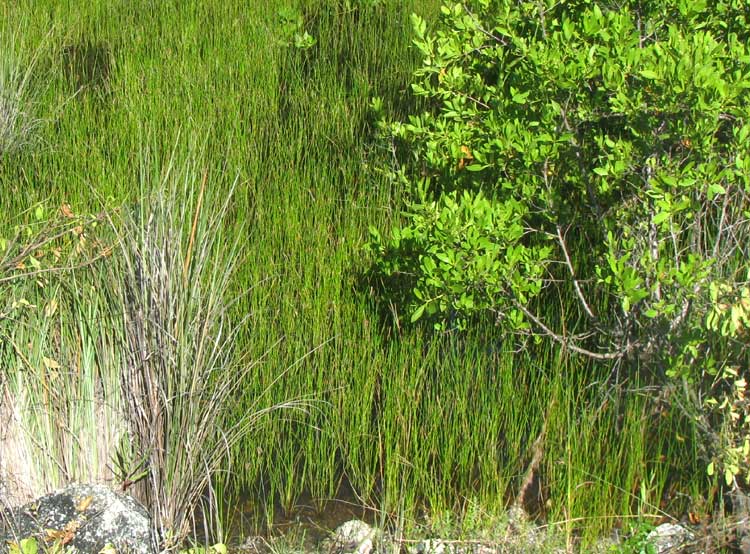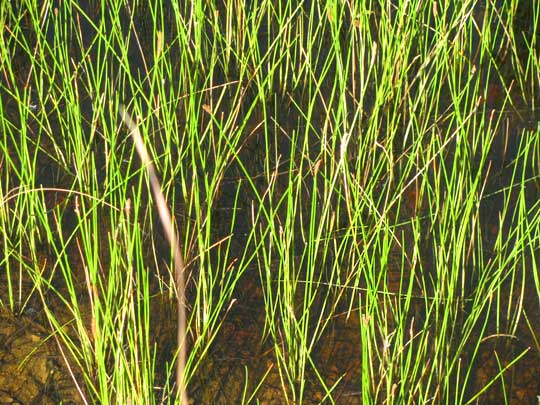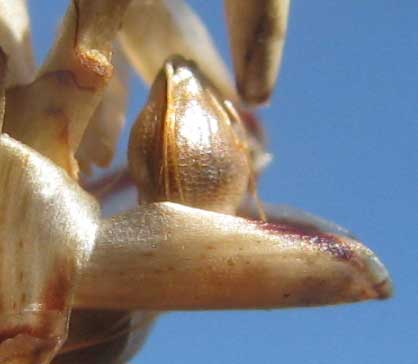Excerpts from Jim Conrad's
Naturalist Newsletter

from the October 30, 2011 Newsletter issued from Mayan Beach Garden Inn 20 kms north of Mahahual; Caribbean coastal beach and mangroves, ~N18.89°, ~W87.64°, Quintana Roo state, MÉXICO
SPIKERUSH
At wet mangrove margins where woody vegetation for some reason doesn't grow, as where road crews have scraped up dirt for elevating the levee above the surrounding wetlands, sometimes you get lushly green carpets of tufted, grasslike plants with stiff, sharp-pointed, spearlike stems, as shown above. Up closer you can see each plant's tufted nature, as seen below:

Most of the cylindrical stems are topped by clusters of overlapping, brownish scales, as shown below:

These scaly things are flower clusters, or inflorescences. A simplified flower resides behind each scale. At the top of the spike at the left you can see slender, curling stiles extending from behind the scales, to catch pollen. The spike at the right is more mature. It's been ripped apart by an animal, probably a bird, foraging for grainlike, achene-type fruits, to eat. You can see such an achene that's come loose and now perches on its subtending scale below:

That achene is 1/10th of an inch tall (2.5mm).
If you're familiar with the northern flora, probably you recognize that we're dealing with what's called a spikerush, which means that it's a member of the genus Eleocharis. That's a big genus, found worldwide in mostly aquatic environments. The Flora of North America lists 67 species for North America. Four are listed for Quintana Roo, the Mexican state I'm in now. Our photographed one is often called the Gulf Coast Spikerush. It's ELEOCHARIS CELLULOSA.
The most famous spikerush is Eleocharis dulcis, better known as the Chinese Water Chestnut. The rhizomes of Chinese Water Chestnuts produce tubers that can be peeled and eaten raw or boiled. Our Gulf Coast Spikerush, though, bears no tubers.
Gulf Coast Spikerushes live in mostly coastal, brackish to saline marshes, ditches, and along beaches from the US Deep South through Mexico and the West Indies south to Nicaragua.